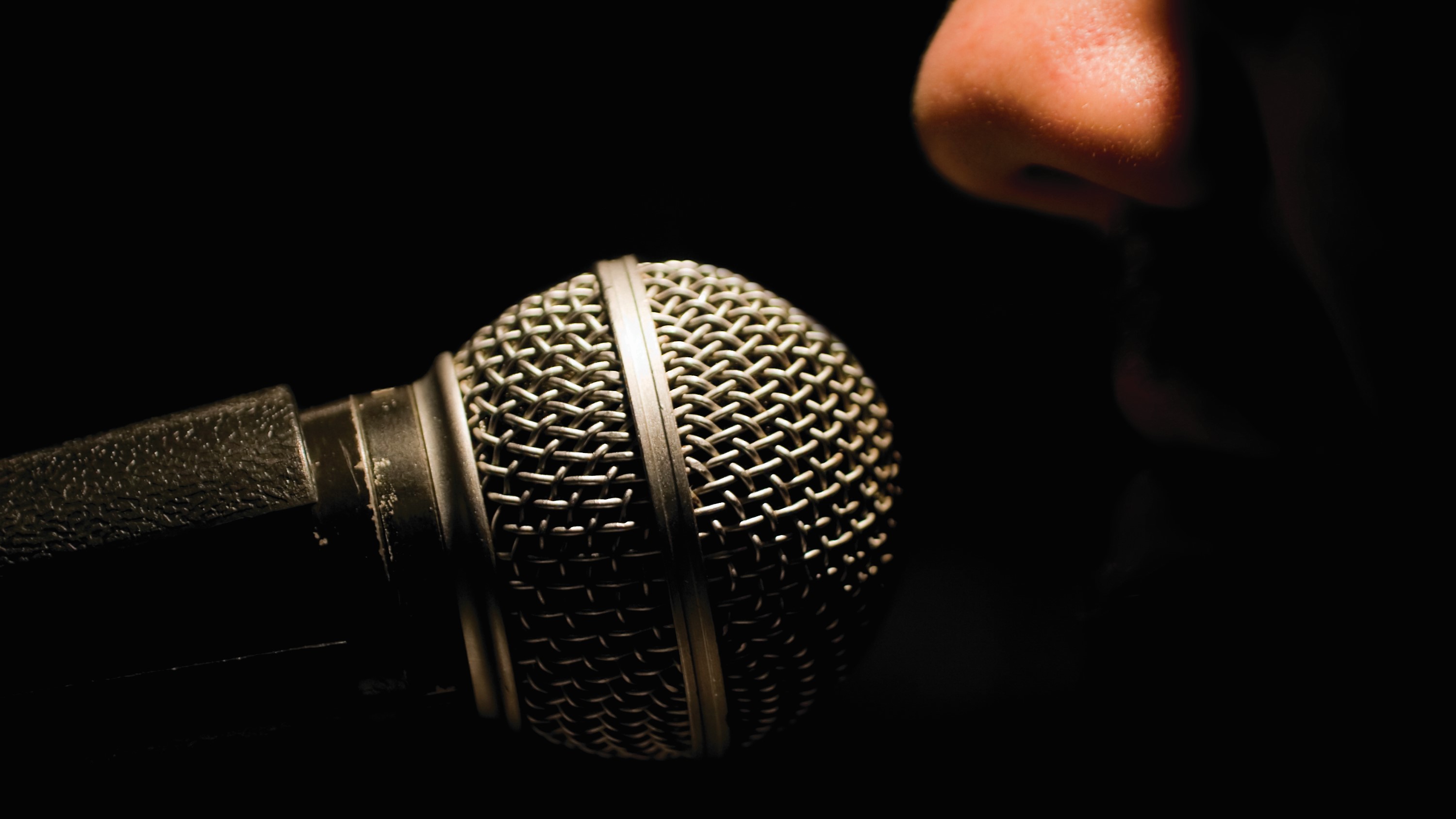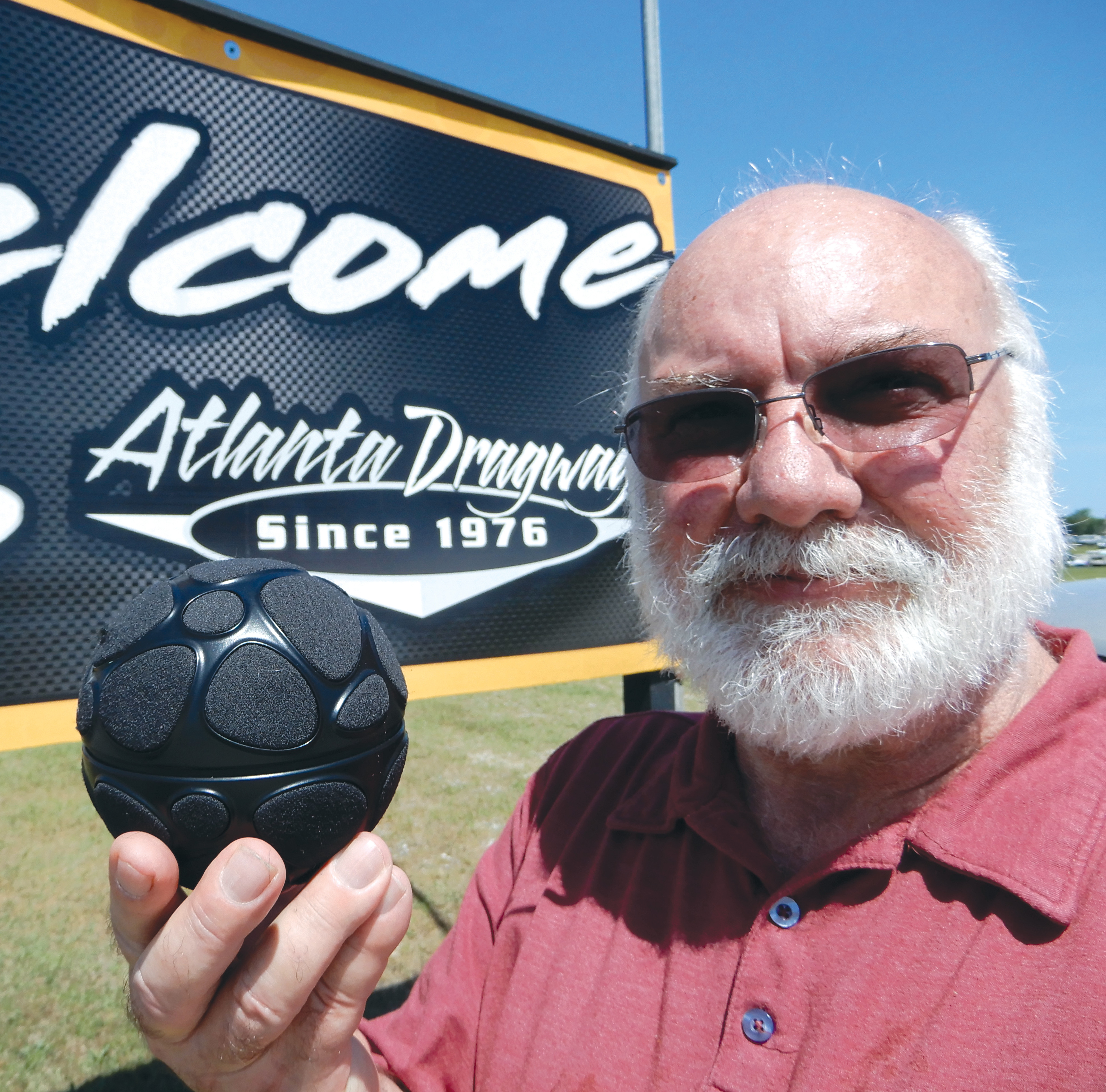It’s Open Mic Night
The realities of working with a live mic

I have never been comfortable talking into a microphone. I first noticed how awkward and funny I sounded when I was in the fourth grade in Madison, Ala., and was learning about girls, chit-chat and telephone etiquette over a rural telephone party line. Not only was the telephone in the kitchen, where I believed everyone on earth including my father was listening; but also the neighbors could listen in because there were three or four houses on the same telephone line as ours. Net result? A paranoid introduction to sound at 10 years old.
Later in my professional life, one of the first things I learned about a television set, announce booth or sports field of play was that there are microphones everywhere and some of those microphones may be open—and often they were. There are boom microphones, field microphones, headset microphones, even a “snoop” microphone, so the accountant could listen in and hear if we were working. Needless to say, there were no private conversations on a television set or in an OB van with so many headsets with open microphones lying around everywhere.
MOUTHY COMMENTATORS
In August, a story about a Cincinnati sports commentary made headlines because the announcer made an insensitive remark, which was accidentally streamed out live to listeners. The announcer awkwardly apologized, but ultimately left the announce booth. As in the “The Wizard of Oz,” the microphone had become the insular shield that precluded direct contact between the adoring peasants and the wizard—but ultimately, the bubble burst.
Mouthy commentators getting caught is nothing new. Early in my career, the live sports networks began using C-band satellite frequencies for transmission between the remote sites and network master control, (transmission was continuous from the location even when the network went to commercial break). Broadcast folklore has stories of drunk and misbehaving fans caught on camera accompanied by imaginative commentary being transmitted through cyberspace over satellite dishes. Not only was this unscripted broadcast picked up by master control, it was also heard by many shocked sports fans and snoops from the FCC. This content would not have met FCC censorship rules.
After phone calls to politicians, the FCC and numerous complaints to network management, live television engineers devised an audio-to-air bypass called a “bird-beater,” which took the announcers out of the audio transmission path and put their voices in the headsets of the director and producer who could strategize about the live production off-air.
At the time, the broadcast industry was flying high with little oversight by too many people with too many Emmys and big egos. But in the mid-1980s, the fiefdom came crashing down when freelance operators and technicians replaced loyal and spoiled network employees. Before Disney owned ESPN and ABC, colorful commentators, foul-mouthed directors and producers were common.
As freelancers, we even had a phrase for these types of people, “The Untouchables.” It always seemed (as it does sometimes today) that these folks were immune to the fallout from an open microphone. The untouchables were rampant in the late ’70s and ’80s until someone pushed the button—the record button.
Get the TV Tech Newsletter
The professional video industry's #1 source for news, trends and product and tech information. Sign up below.
In the early ’80s, I began working with a belligerent producer who, over the PLs (the communications systems), was extremely mouthy to freelancers. After a few years of listening to the B.S., I began to record the intercoms. First it was for a laugh and a cry and usually was recorded with nothing more than a Sony mini cassette recorder capturing an open microphone.
But after the producer called a college intern an unacceptable word, I went to upper management to complain on behalf of the crew. Of course the producer did not remember things exactly as I did, but the tape was damning evidence. However, the tape (recording) not only did significant damage to the producer’s career, but to my career as well. Essentially, the network had to do something and dismissed the producer from live television production for a year or so, but I was flat-out blacklisted.
NOT SACRED ANYMORE
The television intercom communication system is a closed private network and was often considered sacred and immune from any implications of harassment, but an open microphone and a recording has been the demise of not only a few commentators, but also television directors and producers and politicians long before Watergate and Nixon. I would think that if you are going to put on a headset and talk over a microphone, it is obvious that there is a good chance that a wide range of people with different sensitivities could be listening in.
Forget sensitivities, what about conspiracies? Consider this, if I make a recording of actual conversations or comments and alter the content and context of the recordings for fun or possibly for other nefarious reasons, it opens Pandora’s box. Even with my primitive sampling technology in the ’80s, I was able to edit words and phrases enough to construct a conversation, completely out of context, between a producer who was not on site yet and a gullible sports commentator who was on headsets.
A lot of the behavior I witnessed seemed to occur simply because people could get away with it, including my sampler escapade with the sports announcer, although I got an earful from the late, great Fred Rheinstein when he found out about my little prank. I still have Fred’s voice loaded up on my vintage Akai S900 Sampler and chuckle every time I play one of his witty comments.
It is not necessarily illegal to record someone without their permission and I imagine most seasoned broadcast technicians can remember an incident where two or three people did not remember things the same way. But what about the morality of the recording? When there is little to no accountability the results are predictable. Remember the recording of a presidential candidate boasting about grabbing a person’s private parts? Beware, there may be an open microphone somewhere and someone may be listening and recording you!
Dennis Baxter has spent over 35 years in live broadcasting contributing to hundreds of live events including sound design for nine Olympic Games. He has earned multiple Emmy Awards and is the author of “A Practical Guide to Television Sound Engineering.” He is currently working on another book about immersive sound practices and production. He can be reached at dbaxter@dennisbaxtersound.com.
Dennis Baxter has spent over 35 years in live broadcasting contributing to hundreds of live events including sound design for nine Olympic Games. He has earned multiple Emmy Awards and is the author of “A Practical Guide to Television Sound Engineering,” published in both English and Chinese. His current book about immersive sound practices and production will be available in 2022. He can be reached at dbaxter@dennisbaxtersound.com or at www.dennisbaxtersound.com.

